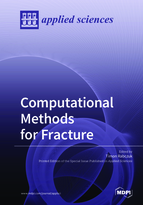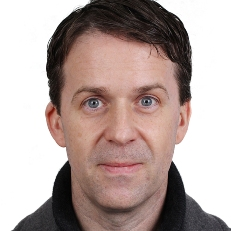Computational Methods for Fracture
A special issue of Applied Sciences (ISSN 2076-3417). This special issue belongs to the section "Mechanical Engineering".
Deadline for manuscript submissions: closed (31 January 2019) | Viewed by 80359
Special Issue Editor
Interests: discontinuity; machine learning; multiscale modelling; isogeometric analysis
Special Issues, Collections and Topics in MDPI journals
Special Issue Information
Dear Colleagues,
Computational modeling of fracture and failure of engineering systems and materials has been the focus of research for many years, and there has been tremendous advancement in the past two decades with methods such as the Extended Finite Element Method (XFEM) developed in 1999, peridynamics (2000), the cracking particles method (2004) or phase field models (2009). There has been also a great deal of effort in developing multiscale methods for the design of new materials, such as the Extended Bridging Domain Method or the MAD method.
The main focus of this Special Issue is on computational methods for fracture. However, articles submitted to this Special Issue about validation, uncertainty quantification, large-scale engineering applications and constitutive modeling are also welcome. Potential topics include, but are not limited to:
- New computational methods for fracture
- Advances in partition of unity methods
- Meshfree methods
- Isogeometric analysis
- Efficient remeshing techniques
- Phase-field and screened-Poisson models for fracture
- Peridynamics
- Multiphysics problems such as hydraulic fracturing
- Computational methods for crack detection
- Large-scale engineering applications
- Multiscale methods for fracture
- Validation and uncertainty quantification
Prof. Dr. Timon Rabczuk
Guest Editor
Manuscript Submission Information
Manuscripts should be submitted online at www.mdpi.com by registering and logging in to this website. Once you are registered, click here to go to the submission form. Manuscripts can be submitted until the deadline. All submissions that pass pre-check are peer-reviewed. Accepted papers will be published continuously in the journal (as soon as accepted) and will be listed together on the special issue website. Research articles, review articles as well as short communications are invited. For planned papers, a title and short abstract (about 100 words) can be sent to the Editorial Office for announcement on this website.
Submitted manuscripts should not have been published previously, nor be under consideration for publication elsewhere (except conference proceedings papers). All manuscripts are thoroughly refereed through a single-blind peer-review process. A guide for authors and other relevant information for submission of manuscripts is available on the Instructions for Authors page. Applied Sciences is an international peer-reviewed open access semimonthly journal published by MDPI.
Please visit the Instructions for Authors page before submitting a manuscript. The Article Processing Charge (APC) for publication in this open access journal is 2400 CHF (Swiss Francs). Submitted papers should be well formatted and use good English. Authors may use MDPI's English editing service prior to publication or during author revisions.
Keywords
- Fracture
- Modeling and Simulation
- Validation
- Uncertainty Quantification
- Finite Elements
- Meshfree Methods
- Peridynamics
- Isogeometric Analysis






